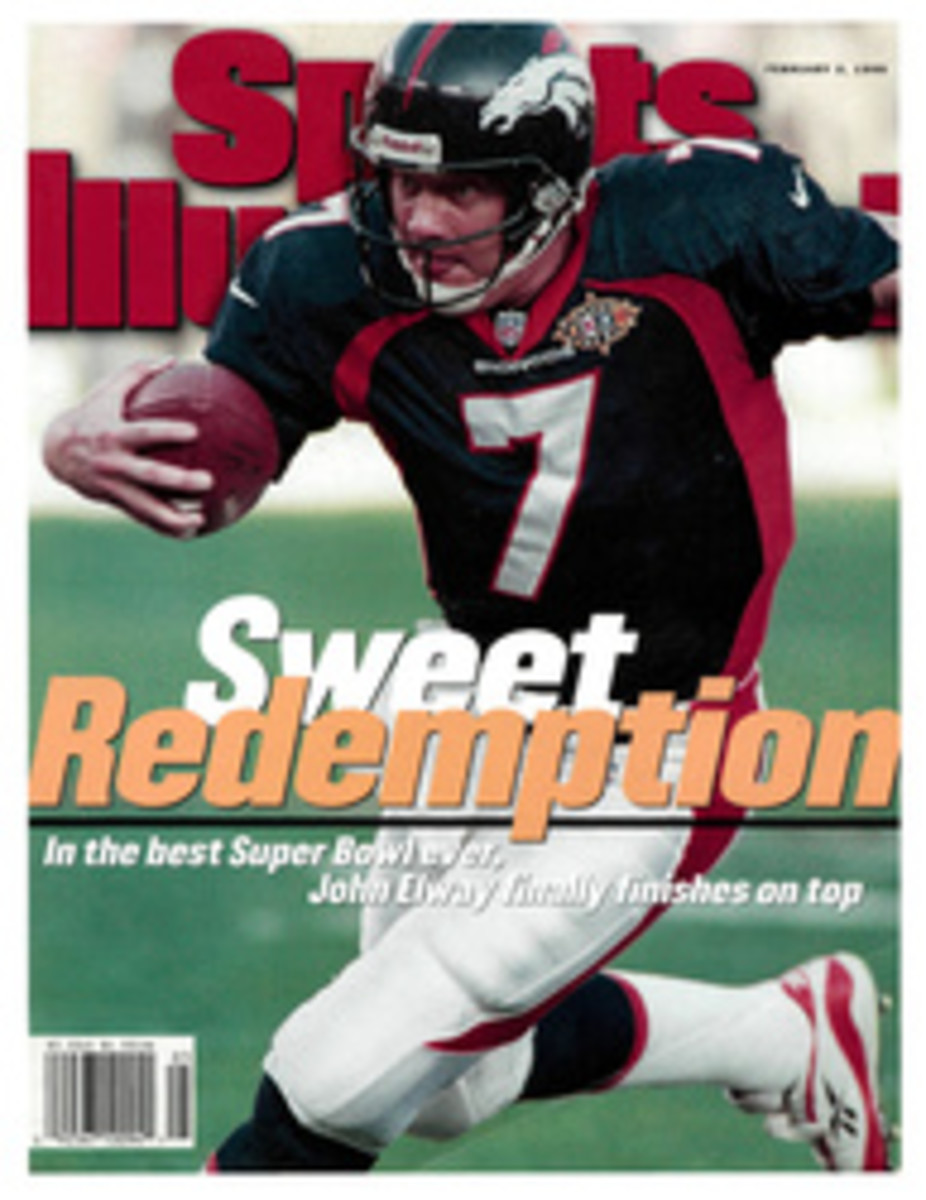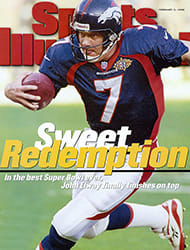
Marked Man The Broncos were determined not to let LeRoy Butler stop them--and they succeeded
The target for a Denver blocking scheme that enabled Terrell
Davis to rush for 157 yards, run for a Super Bowl-record three
touchdowns and win the MVP trophy wasn't future Hall of Fame end
Reggie White or 345-pound tackle Gilbert Brown. It was strong
safety LeRoy Butler, the star of Green Bay game films, an
unblocked phantom who would appear out of nowhere and ruin play
after play with bone-crushing tackles. "Our main job," said Alex
Gibbs, coach of the smallest (an average of 289 pounds per man),
quickest and best offensive line in the business, "was to make
sure Butler wouldn't make plays against us."
"We saw films of games in which a play would be well blocked,"
said Broncos center Tom Nalen, "but Butler would come in
scot-free and make tackles for no gain or minus yardage. We knew
we had to get a hat on him every play. He might have been
surprised. That hasn't happened to him all year."
Denver used a variety of schemes. Sometimes one of the tackles,
Tony Jones or Gary Zimmerman, would turn the defensive end over
to the tight end and go after Butler. "You have to get on him
quickly," Jones said, "or he'll ole you, and you'll be blocking
air."
On strongside runs, fullback Howard Griffith would sometimes
seek out Butler, passing his normal assignment, the outside
linebacker, along to a wide receiver. When the Broncos ran
weakside, a wideout would sometimes crack down on Butler. "We
pride ourselves on our blocking," said flanker Ed McCaffrey, who
at 215 pounds had 15 pounds on Butler.
When Butler was stacked, or hidden behind a defensive lineman,
it was up to one of the middle three--Nalen and guards Brian
Habib and Mark Schlereth--to find him quickly. "You're in the
flow of a play, and Terrell watches for an alley and then makes
his cut," Schlereth said. "That's our running game. Butler is
very good at finding those alleys and filling them, so one of us
had to get there first. Whoever had that alley in front of him
had to go after him."
Sounds simple, but the keys were speed, precision and quick
thinking on the move, which Gibbs says are the hallmarks of his
unit and the reasons he wouldn't trade it for any in the game. A
front five of 330-pounders could never make it work.
Butler led Green Bay with nine tackles, but most of his stops
were downfield. Davis was not stopped for a loss on any of his
30 carries. All told, Denver rushed for 179 yards on 39 carries,
with the only negative yardage coming when Elway took a knee on
the last play of each half. In crunch time the Packers' defense
was a worn-out unit as the Broncos, on their final two series,
drove from their own 18 to Green Bay's 39, punted the Packers
into a hole and then put the game away with a 49-yard drive that
ended on a 17-yard run by Davis and his one-yard walkover
touchdown. "They were substituting Reggie White in and out,"
Nalen said. "Brown was exhausted. When we'd break our huddle, he
hadn't even lined up yet."
"Speed, conditioning, strength and a great runner," Gibbs said.
"I'll take that formula any time."
--PAUL ZIMMERMAN
COLOR PHOTO: WALTER IOOSS JR. Butler (36) got most of his tackles like this one--after a Bronco, here Davis, had broken off a long gain. [LeRoy Butler tackling Terrell Davis]

